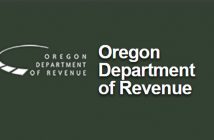Last weekend I spent a day mountain biking the 26 mile McKenzie River Trail. The forest floor was carpeted in an emerald green of thick moss and ferns. The McKenzie River crashes 140 feet over a lava cliff to form the stunning Sahalie Falls. This verdant landscape, just a short distance from Sisters, reminded me so much of New Zealand.
Five friends from Missoula, Montana joined me for this adventure. They are all successful professionals in their 50s who have worked hard and accomplished much in their fields of endeavor. Over this enjoyable daylong excursion through the woods, retirement planning somehow became a topic of deep conversation. One of the guys shared that he and his wife had a goal to retire on 1/1/11. He then explained in a heartrending tone how their retirement dream has withered away. Like millions of successful baby boomers they were blindsided by the financial collapse. Retirement daydreams of freedom and folly are now interrupted with anxiety and doubt. Can I even afford to retire at all? Will I be able to sustain my lifestyle? Why didn’t I do more? Is it too late?
In the midst of the worst economy since the Great Depression, I feel it is imperative to examine our relationship with the way we spend, save, borrow, invest and think about money. The days of using our homes as piggy banks to ride the appreciation highway are over. What was typically one’s largest asset is now their largest liability. It is now time to rethink your priorities and get back on track to retirement.
There is no magic pill that will help get us back on the road to financial independence but there are some strategies that can certainly help. The Modern Portfolio Theory is an investment approach first developed by Professor Harry Markowitz. In 1990 he won the Nobel Prize in Economics for his theory which states that if one wishes to increase the performance, and reduce the risk in an investment portfolio, he or she should combine investments that are non-correlated with one another.
Simply put, a diversified portfolio of non-correlated assets can provide the highest returns with the least amount of volatility. Constructing a portfolio of investments that move in virtual lock-step with one another is one of the most dangerous things an investor can attempt. When I begin working with new clients, I am baffled as the majority of these worried investors have very little in their portfolios to potentially combat the underperformance of their more traditional investments.
Is Modern Portfolio Theory enough? In today’s new world economy the answer is a resounding NO! If I would have told you just a few short years ago that America’s largest investment bank, brokerage firm, savings and loan, mortgage and automobile companies would experience bankruptcy, you would have thought I was crazy. In addition to diversifying among the major asset classes, I believe it is important to be diversified among a number of investment companies.
My clients have their retirement savings allocated into different tiers. Each one of the tiers has a different purpose, strategy and is invested with a different company. Diversification among asset classes as well as financial institutions is prudent in today’s world.
As if market risk isn’t enough of a challenge in retirement planning, when you experience gains or losses, your sequence of returns can have a significant impact on your retirement assets. It can mean the difference between having enough income in retirement or running out of money too soon. Experiencing an early downturn in retirement may mean running out of money sooner. It can be dangerous to have a retirement projection using a straight line rate of return without factoring in bad timing.
In my example Mr. Smith and Mr. Jones each begin with $100,000. They each withdraw $5,000 per year and have the same 4.6 percent average annualized return for a 30 year period. However, the sequence of returns is reversed. Mr. Smith had poor returns at the beginning of his retirement, followed by stronger returns. Mr. Jones enjoyed strong returns early followed by weak returns.
Because the sequence of his returns was not favorable, Mr. Smith ran out of money after 17 years of taking income. However, the sequence of returns Mr. Jones experienced allowed his savings to continue to grow, even after taking 30 years of income. Be careful when an analysis states you should achieve your goals by obtaining a specific rate of return. In most cases it has not taken into account the sequence of returns.
When the financial crisis hit many investors were devastated by crushing blows to their retirement accounts. I am meeting people who have seen their retirement savings dwindle before their eyes by as much as 50 percent. I like to ask people the following question: If the market loses 50 percent one year and then increases 50 percent the following year- where are you? Without fail most will say you are back where you started. In actual fact, your portfolio has experienced a 25 percent decline! This happened twice over the last ten years which is why many advisors call it the “Lost Decade for Investors.” As a result, a lot of folks in their 50s and 60s will need to continue working longer than they had planned. Baby Boomers are exhausted and emotionally frustrated. Unfortunately many are immobilized and doing nothing.
We are sitting down with our clients to reassess their income capabilities and their goals to determine if they are still achievable. It’s not luck that enables people to retire, travel, and enjoy themselves. It is planning. Today, retirement planning should involve more than investment decisions. A comprehensive plan encompasses developing strategies to maintain purchasing power in the face of inflation, ensuring you are diversified among asset classes as well as investment companies and learning ways to protect yourself from the potential of a harmful sequence of investment returns. The economy may continue its yo-yo-like movement with ups and downs. However, we have to remember to keep our perspective by learning from the past and rising to the challenge of the future.
David Rosell is President of the Rosell Financial Group in Bend. He is the Past Chairman of the Bend Chamber of Commerce and the incoming President of the City Club of Central Oregon. David can be reached at 541-385-8831 or www.RosellFinancialGroup.com
Investment advisory services offered through Rosell Financial Group, a State Registered Investment Advisor. Securities offered through ValMark Securities, Inc. Member FINRA, SIPC 130 Springside Drive, Ste 300 Akron, Ohio 44333-2431. 800 765-5201. Rosell Financial Group is a separate entity from ValMark Securities, Inc.




